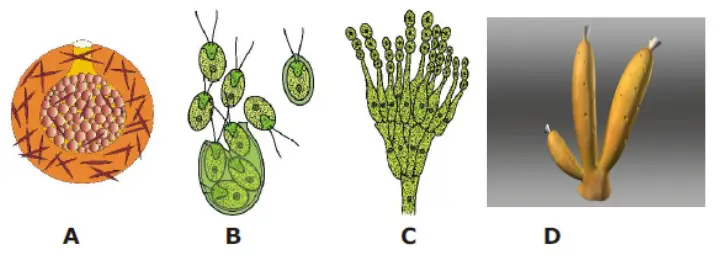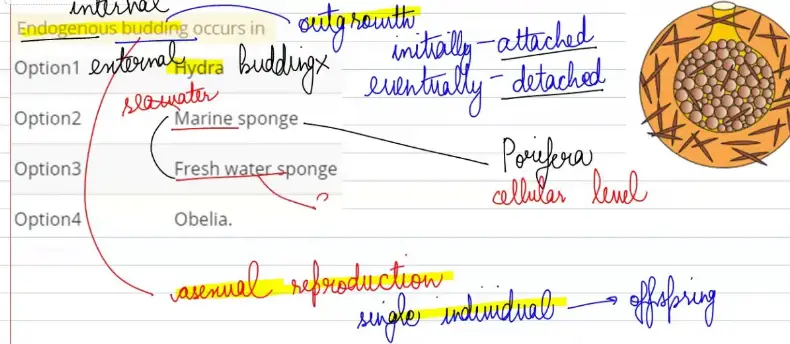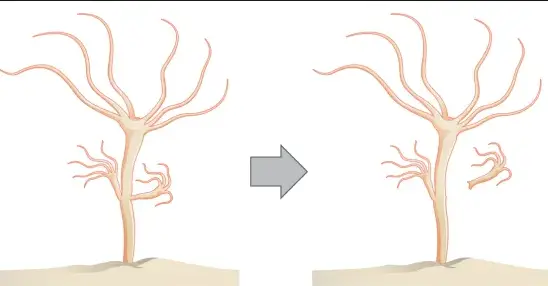Budding, a fascinating form of asexual reproduction, manifests prominently in both exogenous and endogenous forms across various species. This biological process allows organisms to reproduce by forming a new individual from a certain part of the parent body. By dissecting the complexities of these two types, we can appreciate the intricacies of life’s survival strategies.
Exogenous budding involves an organism developing an external growth that eventually detaches to become a separate entity, commonly seen in yeast and hydras. Conversely, endogenous budding happens within the parent organism, where the new individual forms internally, as observed in certain parasites and sponges. The primary distinction lies in the physical location of the new growth relative to the parent’s body.
Both forms of budding play critical roles in the survival and propagation of species, each adapted to specific environmental and biological niches. By understanding these processes, scientists and researchers can better grasp the dynamics of life forms and their evolutionary adaptations, contributing to broader biological and ecological insights.

Basic Concepts
What is Budding?
Budding is a type of asexual reproduction common among plants, yeast, and certain animals. This process involves a new individual growing from a specific region of the parent organism. The new organism develops following cell division, typically at one site, and eventually detaches to lead an independent life. This mode of reproduction is significant because it allows organisms to reproduce rapidly and efficiently without the genetic input of another organism.
Types of Budding
There are primarily two types of budding: exogenous and endogenous. Each type has a unique process and biological significance, contributing to the survival and proliferation of species in diverse ecological niches.
Exogenous Budding
Definition and Process
Exogenous budding refers to the formation of a new organism from the outer surface of the parent. The process follows these steps:
- A small protrusion appears on the parent body.
- This protrusion grows by mitotic cell divisions, forming a bud.
- The bud gradually enlarges and develops its own organs and body parts.
- Once mature, the bud detaches from the parent organism to live independently.
This type of budding is particularly visible in plant cuttings and some animal species like hydras and corals.
Examples in Nature
Hydras are classic examples of exogenous budding in the animal kingdom. A hydra will grow a bud from its side, which develops tentacles and a mouth before detaching. Another example is the coral reefs, where budding corals contribute to the expansion and maintenance of reefs, crucial for marine biodiversity.
Endogenous Budding
Definition and Process
Endogenous budding involves the development of a new organism within the parent body. The primary steps include:
- An internal bud forms within the parent organism’s body.
- It develops into a fully formed organism while still attached to the parent.
- In some cases, the new organism may detach; in others, it remains part of the parent organism.
This type is observed in some flatworms and certain parasitic species, where the internal environment protects the developing bud.
Examples in Nature
Endogenous budding is evident in trematodes, parasitic flatworms that reproduce within their host’s body. This method ensures the propagation of the parasite within the safe environment of the host. Sponges also exhibit endogenous budding by developing new sponges within their body mass, which either stay connected or break away to form new colonies.
Key Differences
Biological Process
The biological process of exogenous budding involves external growth, making it visible and often rapid, as external conditions directly influence it. In contrast, endogenous budding occurs internally and is generally slower, influenced by the host’s or parent’s internal conditions.
Occurrence and Frequency
Exogenous budding is more common in environments where rapid colonization or reproduction is beneficial, such as in aquatic environments for corals. Endogenous budding tends to occur in more controlled environments where the organism benefits from stability and protection, like internal parasites in a host.
Significance in Biology
The significance of budding in biology cannot be overstated. It allows for genetic stability, rapid population growth, and colonization capabilities, which are crucial for survival in changing environments. Additionally, understanding these processes helps in fields like agriculture, where budding techniques are applied in plant propagation, and medicine, particularly in the study of parasitic life cycles and their management.

Role in Reproduction
Exogenous Budding Impact
Exogenous budding significantly impacts the reproductive strategies of various organisms. In species like hydras and certain algae, exogenous budding enables rapid population growth and colonization, which are crucial for survival in fluctuating environments. This form of reproduction allows organisms to:
- Quickly adapt to changes in the environment due to the rapid turnover of generations.
- Increase genetic diversity within a habitat, even though it does not involve the exchange of genetic materials.
- Expand spatially across large areas, contributing to the robustness of the ecosystem.
Endogenous Budding Impact
Endogenous budding, although less visible, plays a vital role in the lifecycle of organisms like certain parasites and sponges. This method of reproduction allows organisms to:
- Maintain a presence within a secure and controlled environment.
- Ensure the survival of the species by spreading internally, often within a host, leading to more stable population dynamics.
- Regulate their growth according to the conditions of the internal environment, maximizing survival rates.
Ecological Importance
Environmental Adaptations
Budding contributes to environmental adaptations by enabling organisms to thrive in diverse conditions. For example, coral reefs adapt to marine environments through exogenous budding, creating vast structures that provide habitats for numerous marine species. Similarly, endogenous budding allows organisms to adapt internally to their hosts, influencing their evolutionary paths and interactions with their environments.
Contribution to Ecosystems
The contributions of budding to ecosystems are profound:
- Habitat formation: Coral reefs formed through budding serve as essential habitats for marine life, supporting biodiversity.
- Nutrient cycling: Organisms that reproduce through budding, like sponges, play crucial roles in nutrient cycling within aquatic ecosystems.
- Population control: By facilitating rapid reproduction, budding helps maintain the balance of populations within ecosystems, often acting as a buffer against population crashes.
Research and Studies
Recent Findings
Recent studies have shed light on the intricate details of how budding influences genetic stability and adaptation. For example, research on yeast has demonstrated how exogenous budding can lead to rapid genetic mutations, which, while increasing adaptability, can also lead to new challenges in managing yeast populations in both natural and industrial settings. Additionally, studies on coral resilience have highlighted the critical role of budding in coral recovery processes post-bleaching events, emphasizing its importance in conservation efforts.
Future Directions
Looking forward, the research on budding is moving towards more integrated approaches that consider both ecological and genetic factors:
- Climate change impacts: Understanding how budding species like corals adapt to warming oceans and acidification is a priority, given their ecological significance.
- Biotechnological applications: Utilizing knowledge of budding processes in biotechnology, including synthetic biology and regenerative medicine, is a growing field of interest.
- Conservation strategies: Developing conservation strategies that protect budding species, thereby ensuring the health and sustainability of ecosystems, is increasingly important.
FAQs
What is Budding?
Budding is a form of asexual reproduction where a new organism develops from an outgrowth or bud due to cell division at one particular site. This process can occur in various species, including plants, yeast, and certain animals, allowing for the spread and survival of organisms without the need for sexual reproduction.
How does Exogenous Budding differ from Endogenous Budding?
Exogenous budding occurs on the body’s exterior, where the bud grows visibly outside the parent organism and detaches upon maturity. In contrast, endogenous budding takes place inside the parent organism, with the bud developing internally and sometimes remaining attached to the parent.
Why is Budding important in nature?
Budding plays a vital role in the propagation of many species, particularly in environments where sexual reproduction is less favorable. It ensures genetic diversity is maintained with less energy expenditure compared to sexual means, allowing species to thrive in varied ecological niches.
Can humans use knowledge of Budding in practical applications?
Understanding the mechanisms of budding has practical applications in agriculture, medicine, and conservation. For example, horticulturists use budding techniques to propagate desirable plant traits, while biologists apply this knowledge to conserve species and restore ecosystems.
Conclusion
Budding, whether exogenous or endogenous, represents a vital reproductive strategy in the natural world. This method not only ensures the survival of species in diverse and changing environments but also offers significant insights into evolutionary biology and adaptation processes. As we explore these natural phenomena, we deepen our understanding of life’s resilience and complexity.
The study of both exogenous and endogenous budding continues to illuminate the sophisticated ways organisms reproduce and adapt. These insights not only enhance our scientific knowledge but also have practical applications that can benefit conservation efforts, agriculture, and even medical science, bridging the gap between theoretical biology and real-world application.

